Regionalism refers to the process through which countries in a particular region work together to achieve common objectives, typically aimed at enhancing economic, political, or security cooperation. While regionalism in Europe and South Asia both promote cooperation, the objectives, processes, and overall impact of regionalism in these two regions are quite different, shaped by the unique political, economic, and historical contexts of each.
Regionalism in Europe:
- Objectives of European Regionalism
The primary objectives of regionalism in Europe, especially within the framework of the European Union (EU), are grounded in deepening political integration, economic cooperation, and ensuring peace and stability after the devastations of two World Wars. The EU was initially conceived as a means to prevent further conflict in Europe, particularly between France and Germany, and to ensure a level of economic interdependence that would make war between European countries unthinkable.
- Economic Integration: One of the foremost objectives of European regionalism was economic cooperation, which began with the European Coal and Steel Community (ECSC) in 1951 and later expanded through the European Economic Community (EEC) and the EU. The creation of a single market, the introduction of a common currency (the euro), and the establishment of a customs union are among the key economic goals.
- Political and Institutional Integration: Another major objective of European regionalism is the creation of a political union that allows for shared governance among member states. This includes the European Parliament, the European Commission, and the European Council as institutions designed to coordinate policy-making across member states.
- Peace and Security: Beyond economics, European regionalism’s objectives include maintaining peace and political stability in a continent with a long history of conflicts. The EU was crucial in ensuring that member states cooperated on issues such as human rights, democracy, and the rule of law, creating a zone of peace in Europe.
- Processes of European Regionalism
The process of regionalism in Europe is marked by gradual institutional integration and enlargement. The EU began as a limited set of economic treaties but gradually expanded its scope to encompass political, social, and environmental cooperation.
- Treaty-Based Integration: The process of European integration has primarily been based on treaties—most notably the Treaty of Rome (1957), the Maastricht Treaty (1992), and the Lisbon Treaty (2009). These treaties have expanded the scope of EU cooperation from purely economic concerns to include issues such as justice and home affairs, foreign policy, and defense.
- Supranationalism and Intergovernmentalism: The European Union has evolved as a supranational organization, meaning that member states agree to pool sovereignty in certain areas (such as trade and competition law), allowing for decision-making at the EU level. However, in some policy areas, such as defense and taxation, European integration has been more intergovernmental, where member states retain more control.
- Enlargement: The European Union’s process of enlargement—welcoming new member states—has been one of its key features. The expansion from six founding members in 1951 to 27 members today has been driven by the EU’s appeal as a model for economic and political integration.
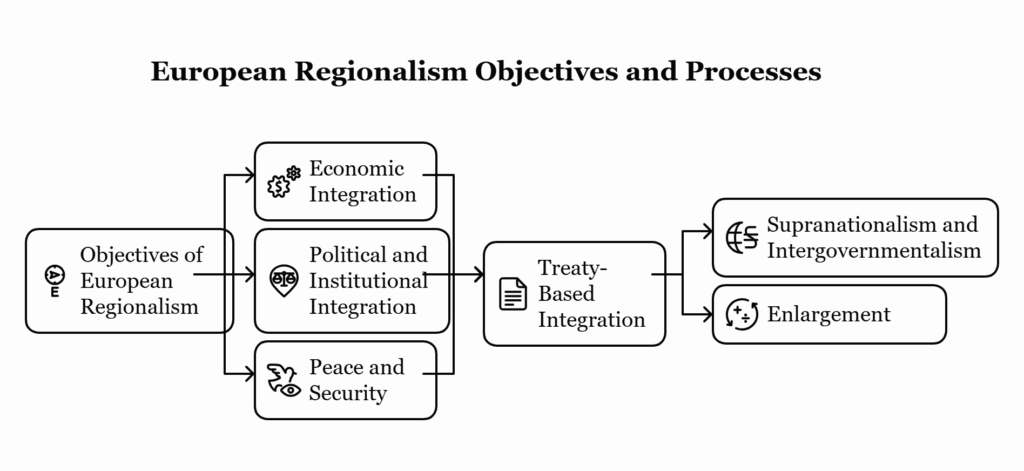
Regionalism in South Asia:
- Objectives of South Asian Regionalism
In South Asia, regionalism is largely driven by the South Asian Association for Regional Cooperation (SAARC), which was established in 1985 with the goal of promoting regional cooperation and development. However, the objectives of regionalism in South Asia are often less institutionalized and more contested than in Europe.
- Economic Cooperation: Similar to Europe, one of the main objectives of South Asian regionalism is to promote economic integration. This includes improving trade relations among South Asian countries, reducing barriers to trade, and facilitating regional economic development. However, the effectiveness of economic cooperation has been limited due to political tensions between member states, particularly between India and Pakistan.
- Peace and Security: Unlike Europe, where regionalism was designed primarily to ensure peace, South Asian regionalism is more focused on managing security issues. The region has witnessed multiple conflicts, notably between India and Pakistan, and regional cooperation is often hindered by historical animosities and territorial disputes, such as the Kashmir conflict.
- Poverty Reduction and Development: A significant objective of South Asian regionalism has been the promotion of economic development, especially in less developed countries like Nepal, Bangladesh, and Afghanistan. SAARC aims to address poverty, improve infrastructure, and enhance social welfare through collective action, although its achievements in this area have been limited.
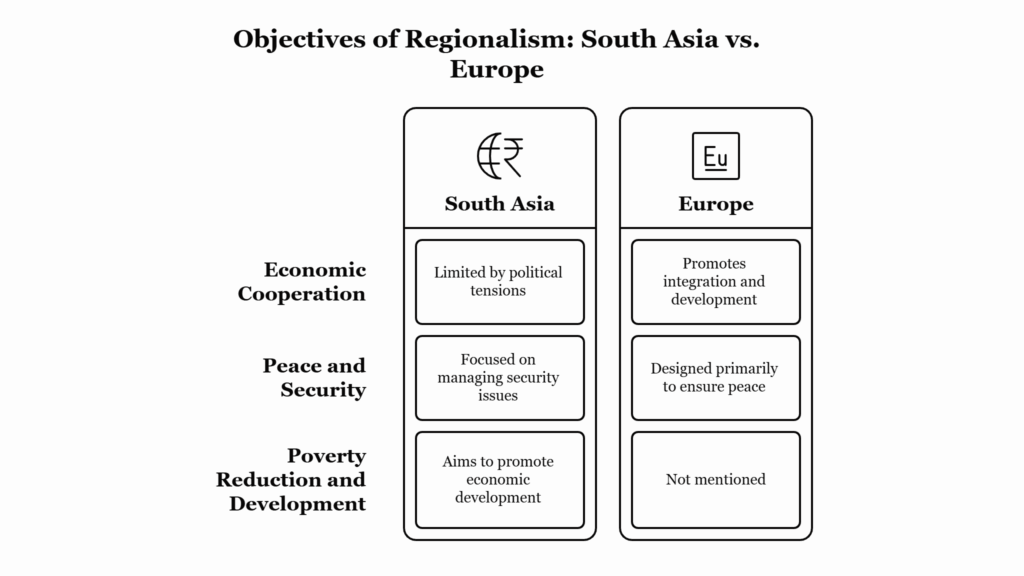
- Processes of South Asian Regionalism
Unlike Europe, where regionalism is deeply institutionalized and legally binding, regionalism in South Asia remains informal and non-binding, with limited institutional mechanisms for implementation.
- SAARC: The primary institution for regional cooperation in South Asia is SAARC. However, SAARC’s processes are often slow and ineffective, as decisions require consensus among all members. The lack of strong institutional frameworks for enforcement, combined with the political tensions between India and Pakistan, has hindered the success of regional initiatives. SAARC’s progress has been limited to areas like cultural exchanges, disaster management, and limited trade cooperation.
- India’s Dominance: Unlike the European Union, where cooperation is based on a balance of power among member states, regionalism in South Asia is largely influenced by India’s dominance. India is the largest and most economically powerful country in the region, and its relationships with smaller neighbors significantly influence the direction of regional cooperation. This has often led to criticisms that South Asian regionalism is skewed in favor of Indian interests.
- Security Concerns: Regionalism in South Asia is also deeply affected by security issues. The rivalry between India and Pakistan, the Afghanistan conflict, and concerns over terrorism have overshadowed efforts to promote economic cooperation. As a result, regionalism in South Asia is often seen as fragmented, with limited cooperation on security matters and no formal regional security framework comparable to the EU’s Common Security and Defence Policy (CSDP).

Conclusion
Regionalism in Europe and South Asia is shaped by different historical, political, and economic contexts, leading to significant differences in both objectives and processes. In Europe, regionalism is driven by a desire for deep economic integration, political stability, and the prevention of conflict, with a strong institutional framework led by the EU. In contrast, South Asian regionalism is characterized by weaker institutional structures, driven by economic cooperation, development goals, and security concerns, yet hindered by longstanding political rivalries, particularly between India and Pakistan. While European regionalism has led to the creation of a comprehensive economic and political union, South Asian regionalism remains more fragmented and less effective in achieving its goals.
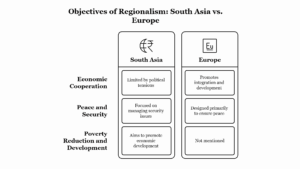


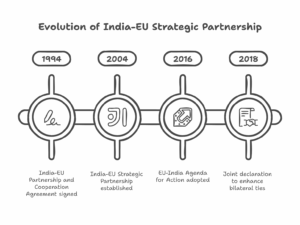
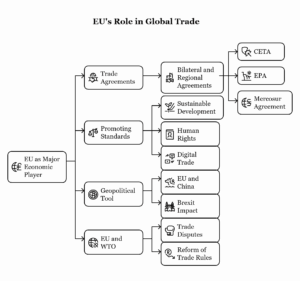


Leave a Reply